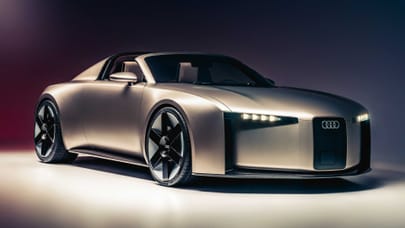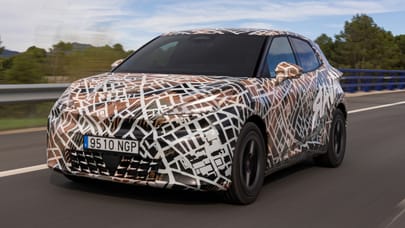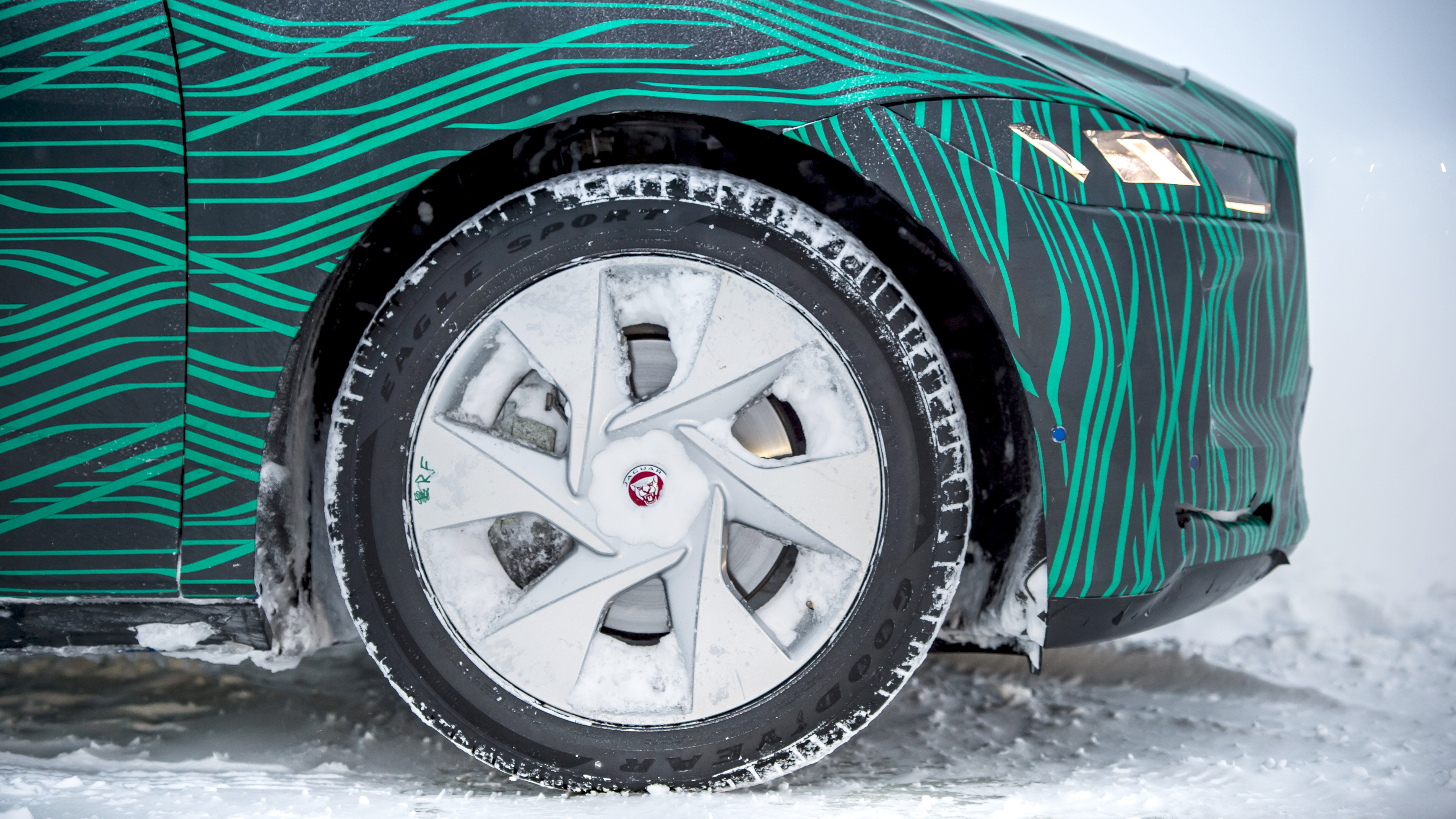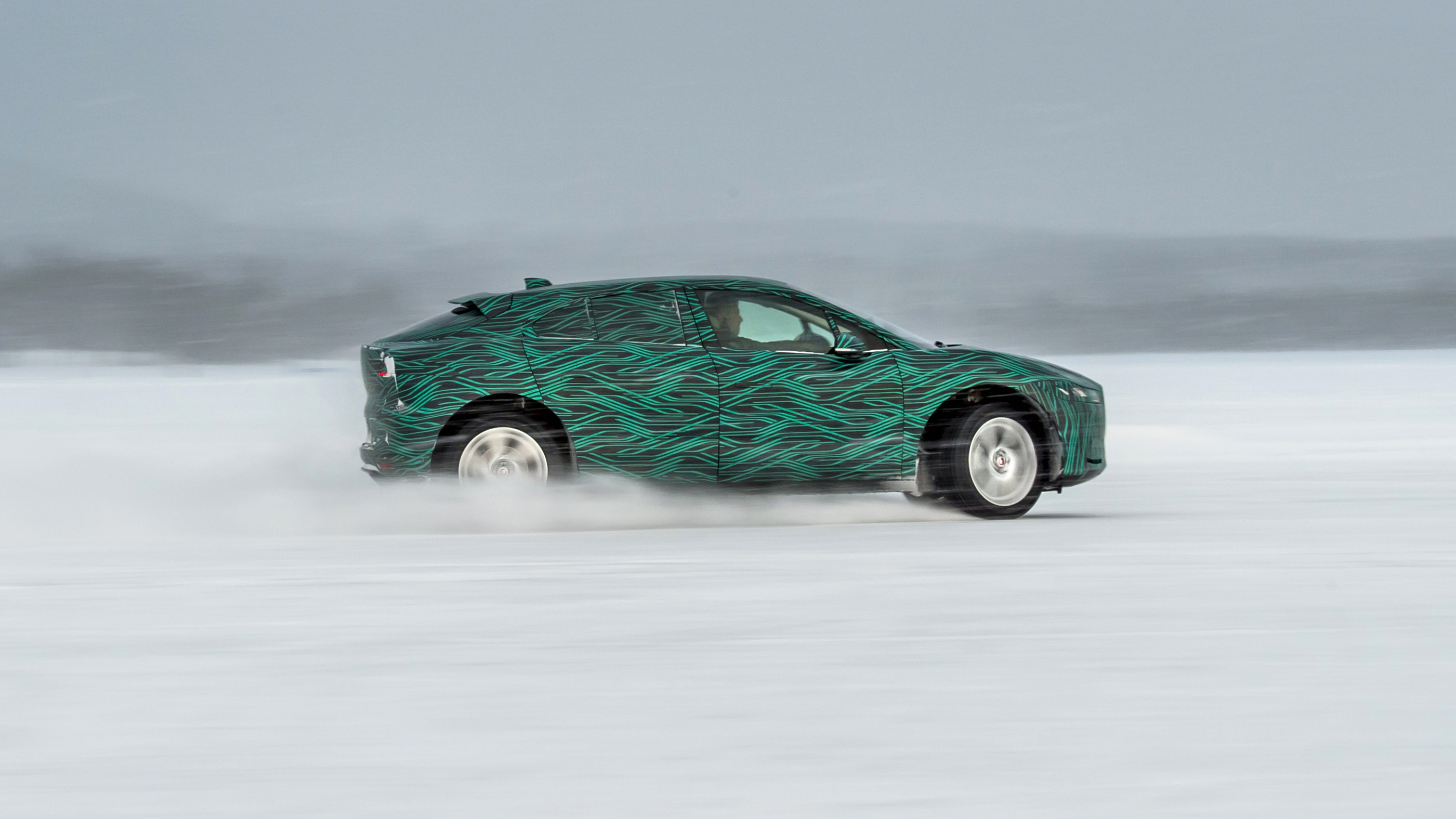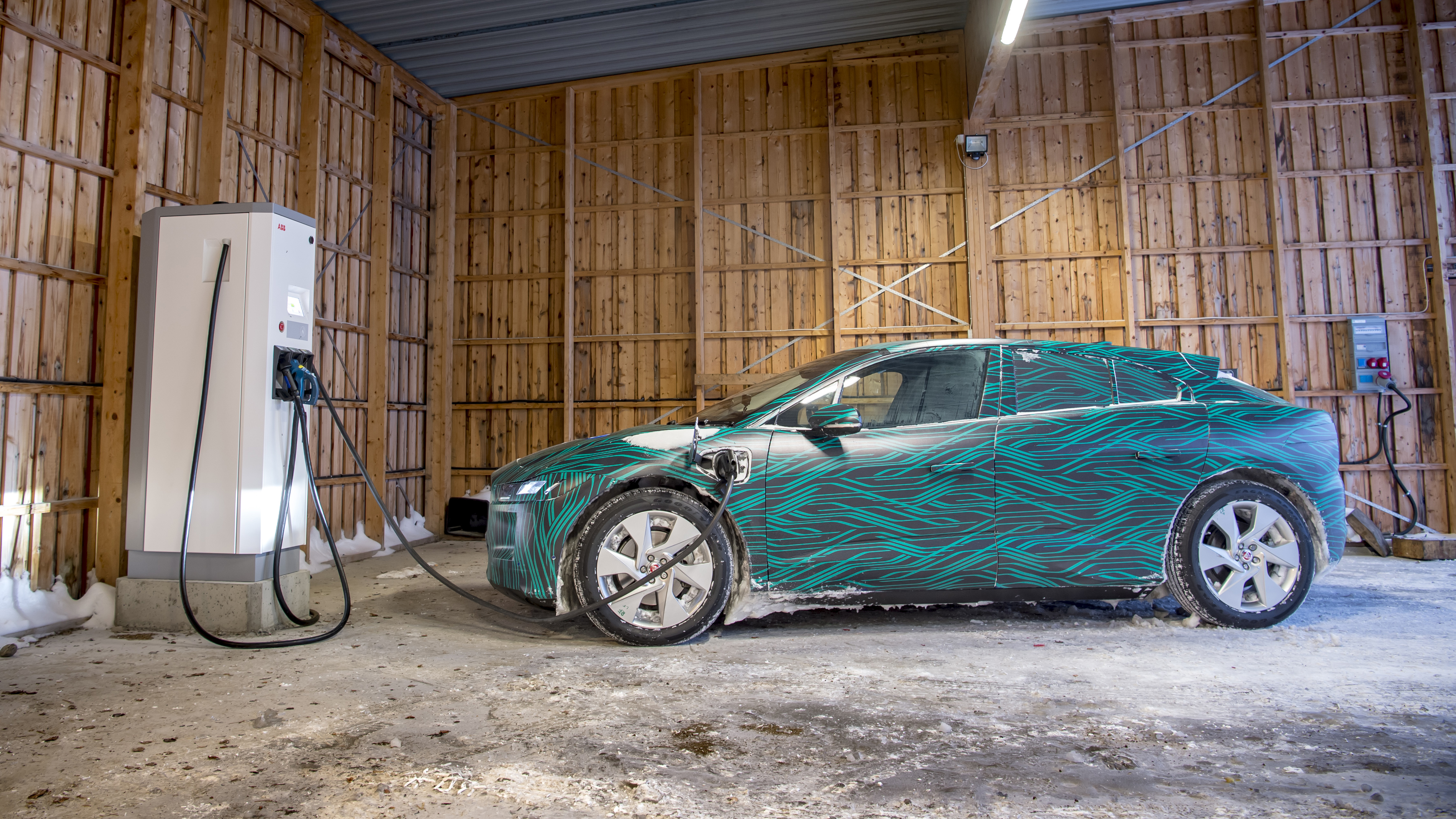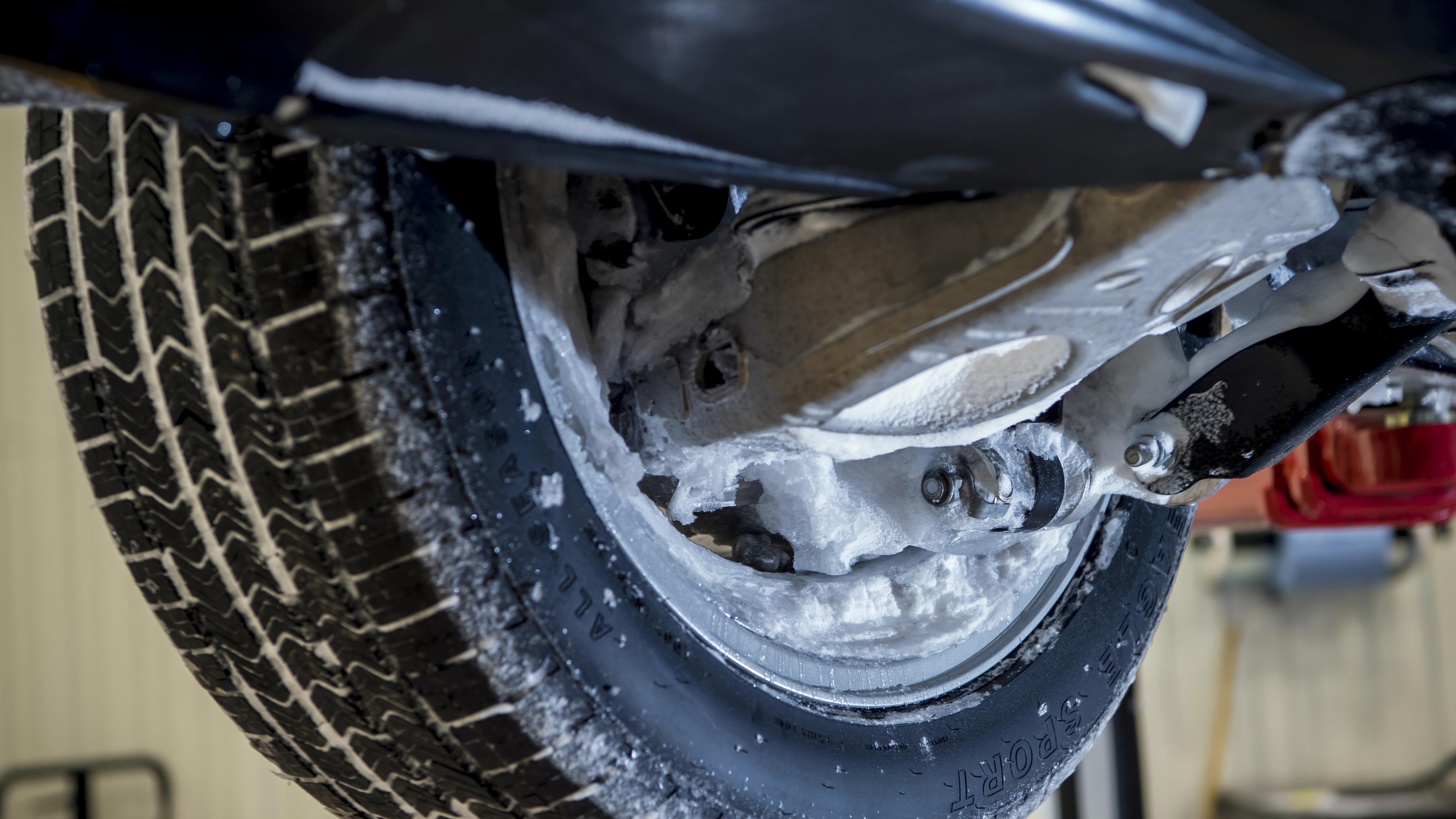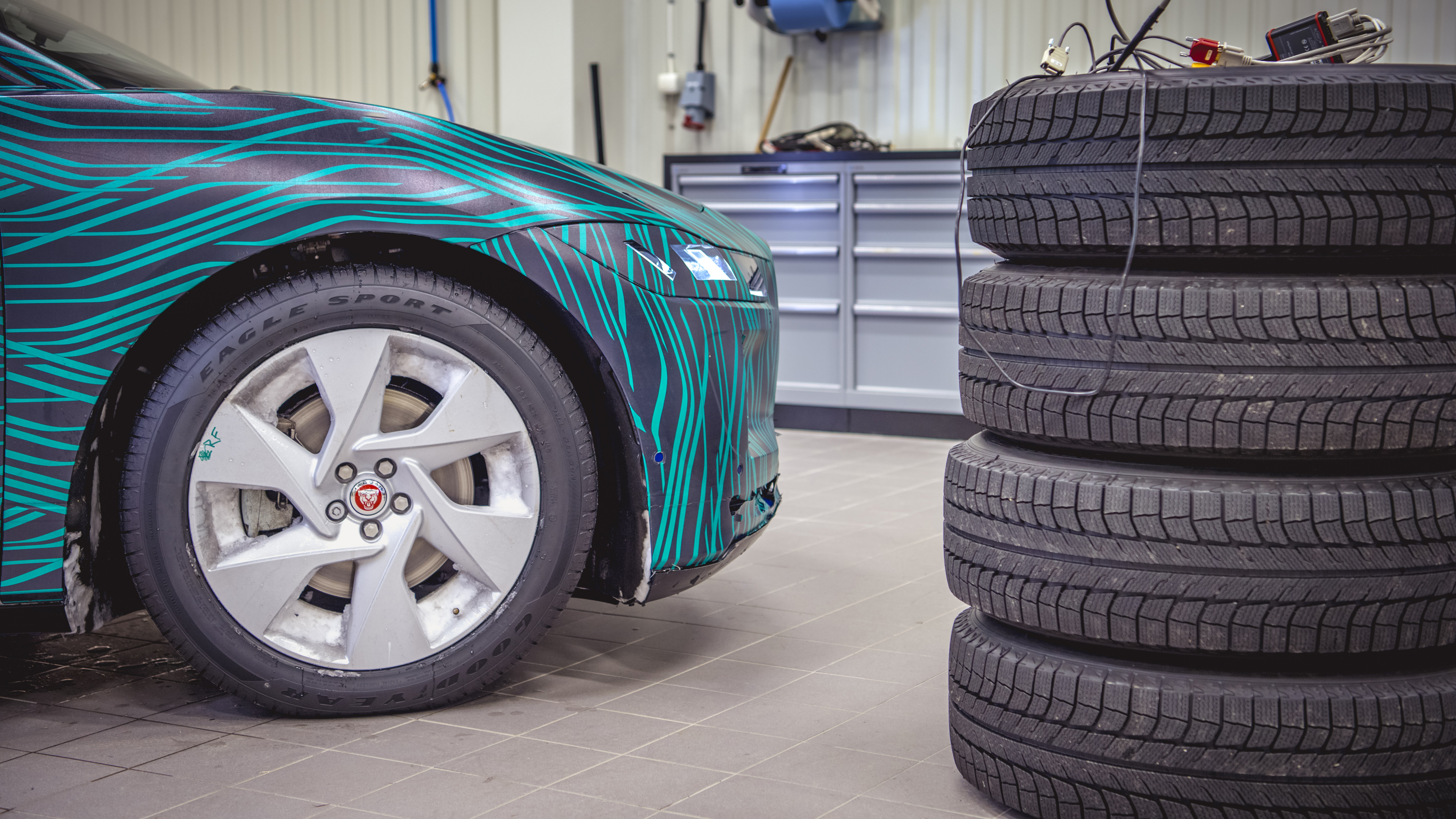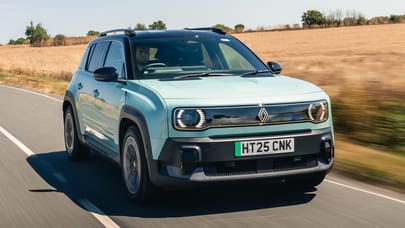
Driving the Jaguar I-Pace prototype on ice
TG heads to Jaguar’s frozen proving ground to test its first ever electric car
“There are only about six houses the other side of those trees. We needed more electricity than the whole village. So we had to write to the council and ask them to upgrade the electrical grid transformer. 'Whatever for?' they asked. “Can’t say”, we said.
And in one small anecdote from Jaguar’s head of European testing ops Phil Talboys, you get a glimpse of how tricky it is to create an electric car boot camp in the frozen wilds of Sweden, only 30 miles or so from the grip of the Arctic Circle. And what a learning curve creating the new Jaguar I-Pace has been…
Words: Ollie Kew
There’s been a car testing facility tucked away between lakes in Revi, Sweden (twinned with the ice planet Hoth) since the 1980s. Land Rover broke ground on the site, and built a solitary workshop, for working on one car at a time. During the Ford days and since 2008 as a joint venture, Jaguar’s been steadily expanding its footprint on the site.
Workshops, garages, offices, and a lake topped with a metre of frozen ice that can support 25-tonne excavators that carve mile after mile of test track into the surface now bustling with activity during the snowy season, stretching from October to March.
It’s home to Jaguar’s nearby Ice Driving Academy, where you can pay about three grand and spend a week learning how to catch continental-sized powerslides in an F-Type wearing studded boots. It’s also the office for up to 130 personnel testing secret future Jaguars and Land Rovers, on the opposite shoreline.
“The engineering boys get quite jealous of the Academy guys”, says Phil. “Their entire job depends on consistency. The 3km tracks have to be kept in perfect condition so when they try a new tyre, or new traction control system, they can be sure it’s the car, not the track, that’s getting better or worse. If you go everywhere sideways, you very quickly polish the surface, and it’s ruined.” Imagine tweaking the set-up on a new XJR on the world’s biggest playground and having to keep it all neat and tidy. Torture.
The latest project to battle the freeze here can out-accelerate every F-Type bar the SVR, can seat five in greater comfort than an F-Pace in a shell a thumb’s width longer than the XE, and I reckon has a lower centre of gravity than any Jaguar since the XJ220, I’m willing to bet. The all-electric I-Pace is a virtuous circle of design wins that can only be unlocked by going battery-powered.
You know by now that electric cars can be sensationally fast – ludicrously quick, you might venture. And they’re quiet, increasingly reliable, and as charging points proliferate around motorway services and multi-storeys, actually viable. I think the BMW i3 is one of the most popular long-termers TopGear magazine has ever run. These things are no longer a footnote, an inconvenience. There’s an EV arms race underway.
Jaguar is beating Audi’s e-tron, Mercedes’ EQ range and Porsche’s Mission E flagship to the plug
Think I’ve drunk the kool-aid? Well, according to 2017’s official car sales figures, British EV sales soared by 32.5 per cent in the last 12 months. Over 47,000 cars requiring a socket found UK homes last year. And besides Tesla’s hugely competent but rather expensive range, and the likeable BMW i3’s relative footnote in sales, there really isn’t a premium player in the EV game. Jaguar is beating Audi’s e-tron, Mercedes’ EQ range and Porsche’s Mission E flagship to the plug.
Jaguar’s built over 200 I-Paces so far, and several of them have ventured to this tip of the Arctic Circle I’ve come for a tour of, where temperatures plunge below minus 40 degrees, and minus ten is a balmy short-sleeves day. Several are plugged in to charge, covered in the phosphor-blue/black wrap. Another I-Pace trundles past, the muted whine of its motors drowned out by the crunch of winter tyres on fresh snow. Its camouflage is crimson. It’s swiftly explained that this particular I-Pace has just returned from hot weather testing in Dubai, where the turquoise wrap was confused for local police car livery. Whoops.
Phil hands over to Steve Boulter, the I-Pace’s Vehicle Integration Manager. “This car is my baby”, he says lovingly. “It’s been a really fun project to work on.”
Top Gear
Newsletter
Thank you for subscribing to our newsletter. Look out for your regular round-up of news, reviews and offers in your inbox.
Get all the latest news, reviews and exclusives, direct to your inbox.
Because Jaguar is coming at this EV game fresh, every decision is a first, and a big one. Take the glycol cooling system that surrounds the floor-mounted batteries. Steve explains that while a normal combustion engine is happiest with coolant at around 90 degrees Celsius, batteries are like a human body. Batteries want to live between 20-30 degrees Celsius.
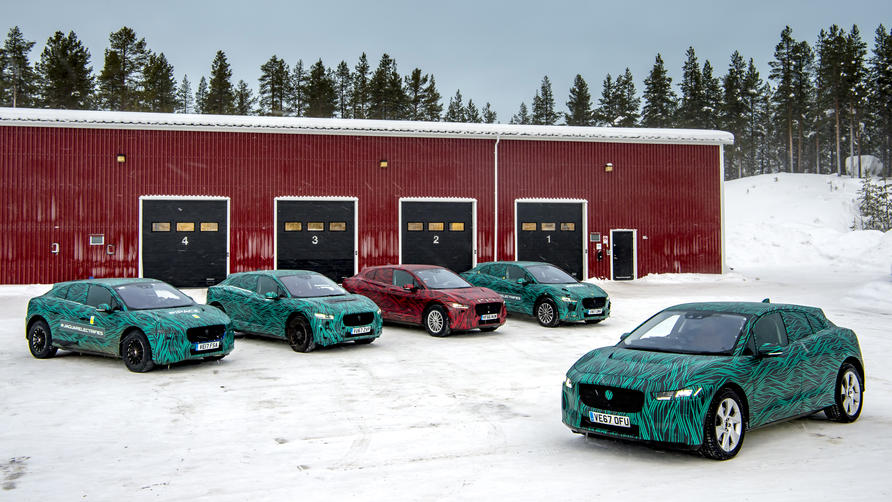
“So a combustion engine is like a cup of tea then – best when piping hot – and EV batteries are more into having a warm bubblebath?”, I venture.
Steve considers my tortured analogy for a moment and says it’s a reasonable generalisation. Plus, because the batteries like to be pretty much the same temperature as the humans in the I-Pace’s spacious cabin, Jaguar uses the same hardware for heating and cooling both sections. Same goes for the preconditioning feature.
We’ve seen this on the likes of the BMW i3 – tell the car’s infotainment system when you’re planning to be on the road, and it’ll start warming the car slowly about half an hour before you even unlock it. That way, power is consumed far more conservatively than hopping in when you’re late for work and whacking the heater into the red zone.
“Air-conditioning and using the heater are the biggest challenges for range depletion”, explains Steve. “Warming the battery up when it’s minus 30 outside uses a lot more energy than cooling it down when it’s in 40-degree heat.” Obviously, those are extremes that won’t matter to I-Pace buyers in much of mainland Europe or the USA, but there are outposts that have to put up with those kind of temperatures, and that’s why the Revi torture boot camp is so crucial. Though no-one from Jaguar wants to go on the record about Tesla’s build quality issues or very public failure to keep up with Model 3 demand, there’s a palpable sense of ‘our customers aren’t the beta testers for the I-Pace – we are’ about the operation up here…
No, there’s no Ludicrous setting for YouTube fame. The I-Pace is conspicuously free of gimmicks
Since I’ve mentioned the T-word, we should cover off how the I-Pace differs from Elon Musk’s brainchild. Early on in the I-Pace’s development, Jaguar made the bold decision it would do everything ‘in-house’. Own-brand motors, batteries, and a new platform. In no way is the F-Pace simply a chassis with bits of Panasonic or Dell laptops shoved into it.
Remember how Tesla started off with rear-drive Model Ss, then added a second motor up front to create the ‘D’ range, and has experimented with varying battery capacity? Jaguar isn’t following in those footprints. Adam Brant, the man in charge of the I-Pace’s propulsion systems, explains that its two 200bhp motors, (which weigh under 40kg each) mounted way down in the bowels of the chassis at each axle, are ‘functionally identical’, and both smaller and more power dense than Tesla’s, which helps with packaging (extra cabin space, better crash safety) and efficiency.
Without getting too Big Bang Theory on you, Jaguar’s gone for permanent magnet type motors, not induction motors, and a single-speed transmission. Each wheel can torque-vector by braking, and the car’s ECU can mimic the transfer of drive between axles you get in a conventional 4x4, only at light speed compared to, say, an F-Pace.
There’ll not be a dizzying list of different power outputs either. Jaguar says the 400bhp drivetrain will be good for 0-62mph in 4.0sec, and the range is set to be at least 310 miles on the NEDC test cycle. No, there’s no Ludicrous setting for YouTube fame. The I-Pace is conspicuously free of gimmicks, or anything that could be seen as intimidating to a new EV adopter. Autonomy isn’t mentioned at all. “It’s supposed to be a Jaguar that happens to be powered by electricity, not another EV but with a Jag badge”, says Adam confidently.
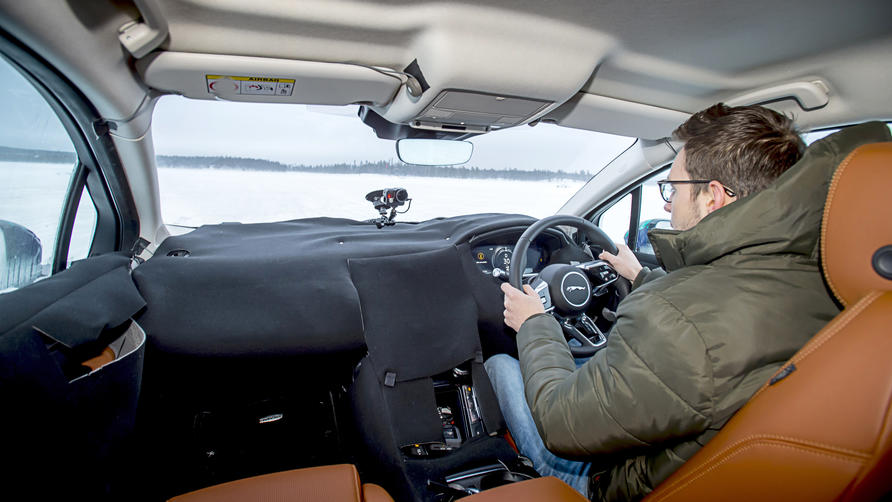
So, it needs to be a driver’s car then. Because that’s what Jaguars are supposed to do well. Superb ride and handling balance, even on cruddy roads. We know the I-Pace has pace and space. What about grace?
On the twisty handling circuit, wearing regular all-season tyres, the electric Jag immediately feels freakishly planted, thanks to its centre of gravity hanging 120mm lower than an F-Pace’s. The pair of motors are near-silent. Power delivery is predictably instant. I’ve not driven an EV on ice before, and having that on-demand torque with no gearbox kickdown or turbo lag to worry about means the I-Pace is saveable from some very severe angles. Adam struggles to suppress big grins while discussing just how driftable the I-Pace is out here.
What can I tell you that’s actually relevant to driving one on the road? Well, Jaguar hopes not too much, because this is a prototype and the only reason I’m able to have a go months before the covers come off the finished product is because we’re skating across a lake. But there are a few nuggets that bode well.
The steering has a typically oily movement and directness. It’s not as quick as Alfa or Mercedes steering, and just as per an XE or XF, that makes the car a soothing joy to pour through corners. It also appears to ride the ridges in the compacted ice professionally, but there’s still fine-tuning to be done here. Hopefully it won’t ride as poorly as an F-Pace does on the 22-inch wheels Jaguar promised it would suit. The I-Pace’s behaviour bodes well, because it needs to do urban cossetting better than any car Jaguar has ever built.
Making sure the car handles deftly in extremis is only a slice of the reason Jaguar’s trekked out here. It’s also making sure the day-to-day stuff will work. It’s promised a 0-80 per cent charging time of 45 minutes, via a DC 100kW charger. That’s important, because the I-Pace will work with standard chargers shared with all other EVs except Teslas, and there’ll be no Supercharger-esque bespoke network.
With EVs, 0-80 per cent charging is rapidly overtaking 0-60mph as a priority. And with that comes a restructuring of how you use a car. Because while filling up with petrol takes all of five minutes, it’s something you have to specifically make time to do. The beauty of an EV that can juice up in under an hour is it does so while you’re at your desk, working. Or asleep. Or having lunch. Your net ‘wasted time’ is diminished.
Jaguar invited us behind closed doors to meet the I-Pace in its final testing phase to show the lengths it’s going to, to get its first EV right, first time. Prices will start around 10-15 per cent higher than a top-spec F-Pace, so it’ll be around £60k and up for an I-Pace, which is spacious, quick, should handle smartly, look dashing and be viable in The Real World. The interior will be a clean, modern space with crisply rendered virtual dials and superior materials to any current Jaguar. This machine will hold some showroom pulling power – like a true Jag.
The real proof, I suppose, will become clear not this time next year, after the I-Pace’s swelling pre-order books have been attended to, but in three or four years, when every model in the Jaguar range has an electrified version, and the I-Pace no longer has the market to itself. If all this effort, the testing, the team’s dedication, their numb fingers and frosted eyebrows have been worth it, they’ll be phoning up the local council in Revi to ask for another heavy-duty transformer soon.




